Freight News:
Daimler Truck’s GenH2 is more than just a fuel cell
HANNOVER, Germany — The first thing to know about Daimler Truck’s GenH2 fuel cell truck is that it is more than a fuel cell truck.
Daimler prefers to focus on hydrogen-powered fuel cell driving for long-haul trucking up and down the mountains of Europe. But a 72-kilowatt battery on board effectively makes the GenH2 a parallel hybrid.
‘Don’t talk about hybrids’
“We don’t talk about hybrids because people who have no contact with hydrogen or fuel cells [ask], ‘What is a hybrid?’ A hybrid is only a question of two types of energy powering the axle,” said Andreas Hofert, a Daimler Truck senior development engineer who piloted a 30-minute test run in the GenH2 during the recent IAA Transportation event.
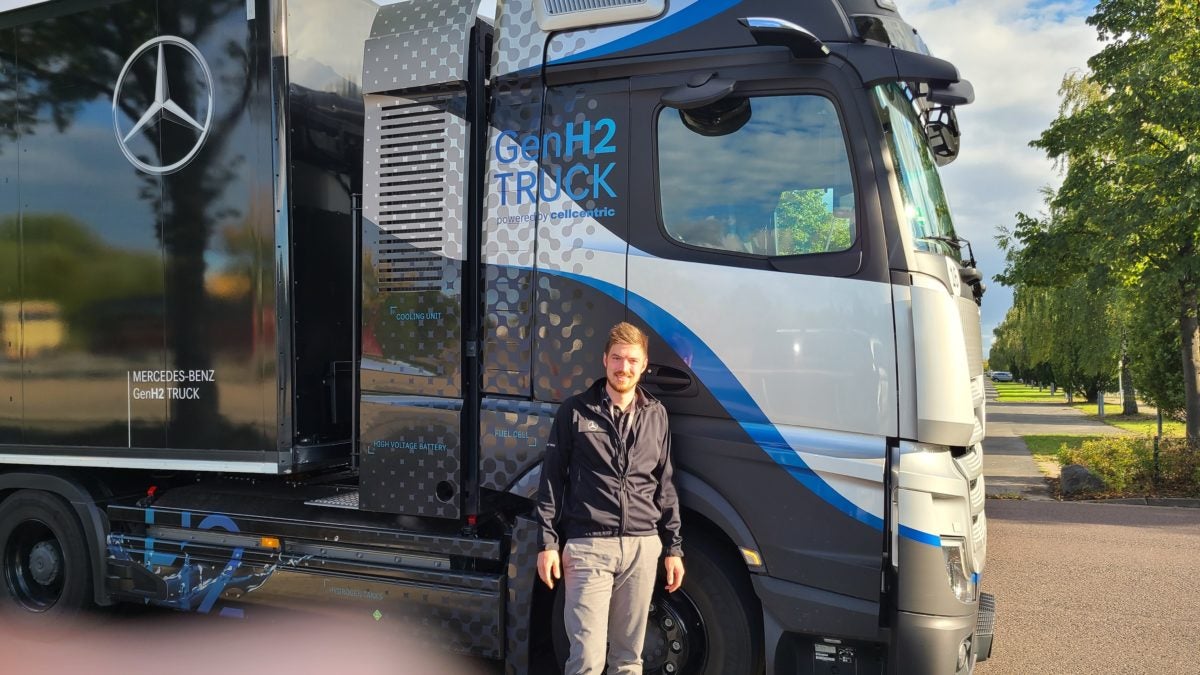
Europeans associate hybrids with carbon-intensive fuel like gasoline or diesel boosted by electricity. It’s a reasonable assumption because that’s how most hybrid powertrains work in passenger vehicles. Such systems are rare among heavy-duty trucks.
One exception is the Hypertruck ERX from Austin, Texas-based Hyliion Holdings. Natural gas converts to electricity for up to 75 miles. But the 1,000-mile promised range depends on burning natural gas instead of just converting it to electricity. In the long term, Hyliion expects to replace natural gas with a hydrogen-powered fuel cell.
Weight allowance
Balancing the additional weight of batteries to power a pure electric or fuel cell-powered rig — 40 tonnes in Europe or 80,000 pounds in the U.S. — is challenging. Authorities on both sides of the Atlantic allow an extra 2 tonnes or 2,000 pounds to offset the typical 10,000 pounds of batteries that eat into cargo capacity.
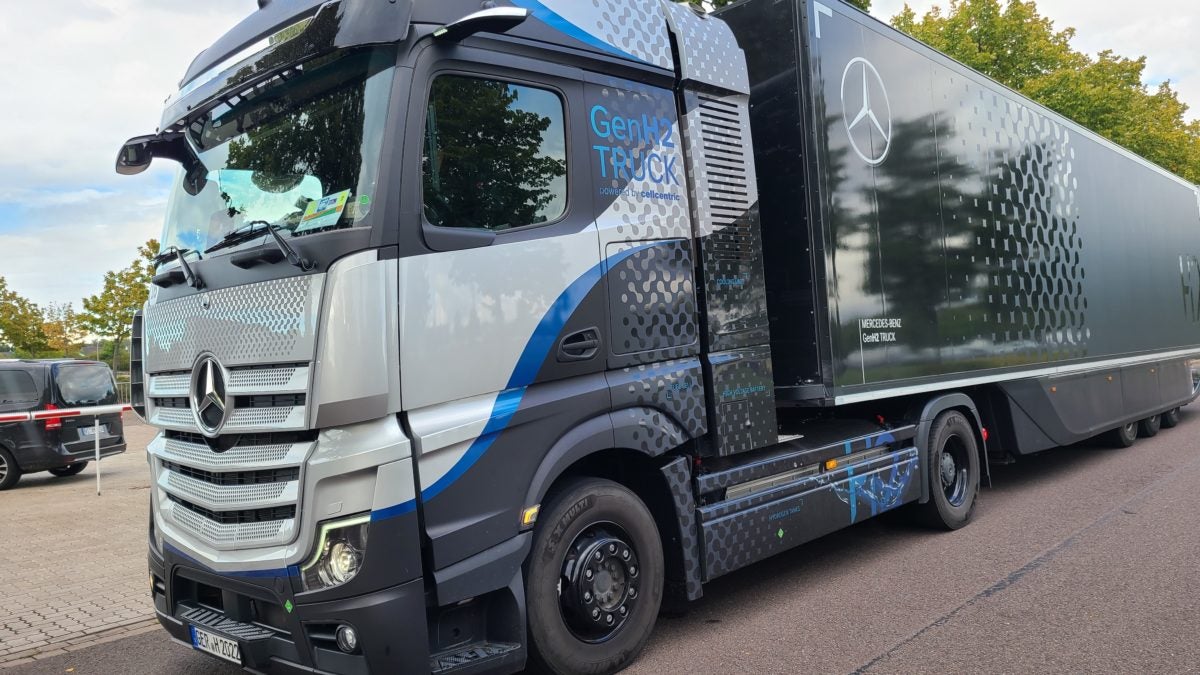
Gaining peak efficiency from two 150-kilowatt fuel cells located below the cabin of the cabover truck is a challenge. The fuel cells operate best at 40% of peak power. Liquid hydrogen cooled to minus 253 degrees Celsius fuels the GenH2. It is two or three times as energy dense as compressed hydrogen gas depending on the compression level.
Adding a 72kW battery pack — 50kW of transient energy — helps reach 1,000 kilometers, or 621 miles of range. Cylindrical cell-encased batteries drive the GenH2 out of park and into traffic where German law sets a 50 kilometer [31 mph] speed limit.
“One of our targets was to find the best split between the fuel cell and the energy provided by the high-voltage battery,” Hofert said. “I could drive either with the fuel cell or with the battery, or nominally with both.
Finding a sweet spot
“The goal for the battery is to let the state of charge be around 50%. We don’t charge it up to 100% and we don’t let it be empty to zero [state of charge],” Hofert said. Such charging and discharging increases the battery life.
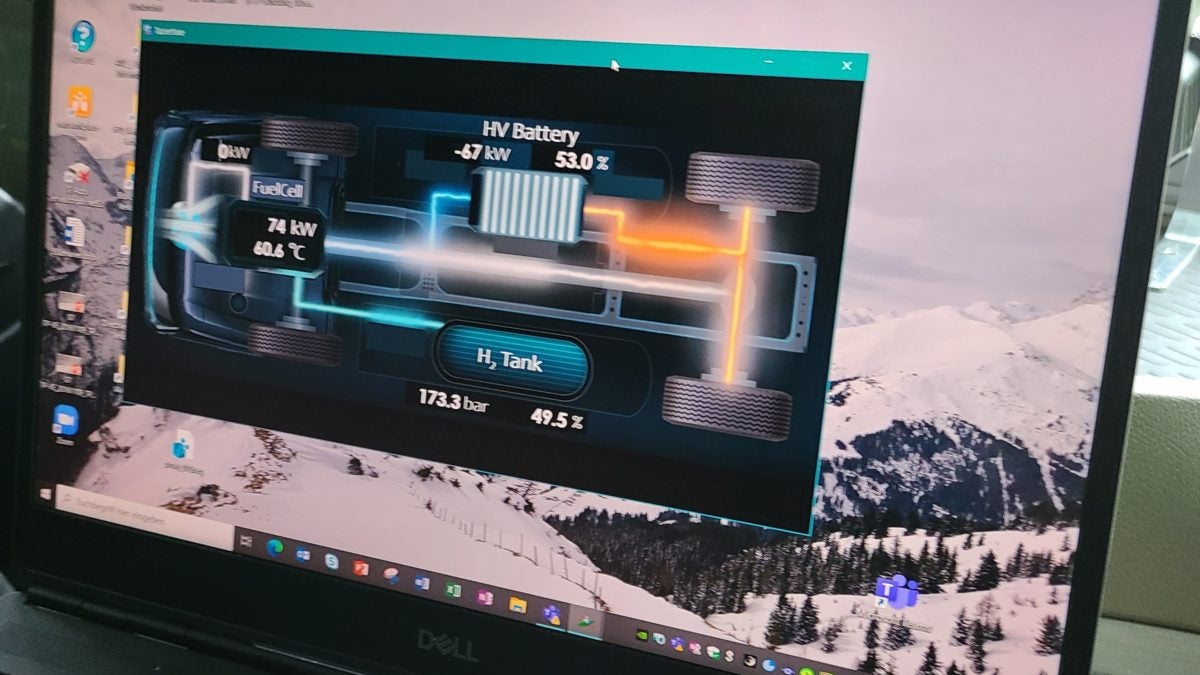
Daimler’s predictive powertrain control system uses GPS to track the truck’s location. It sees what’s coming, such as a hill or an urban area.
Fuel cell primacy
The fuel cell is the primary power source of the GenH2. It takes over when the terrain gets rough, such as traversing the Serbian Alps or Germany’s Castle Mountains.
“The next step is to drive this south over the [German mountains] and see how it is in real conditions compared to simulation and to see how well the fuel cell works in the higher altitudes,” Hofert said.
Daimler’s development truck, now about 18 months old, got its license to drive on public roads a year ago and has amassed 26,000 kilometers, roughly 16,100 miles. The ride is smooth and quiet, similar to a pure battery-electric truck. A low-pitched whine replaces the rumble of a diesel engine.
The GenH2 fuel cell truck prototype from Daimler Truck is a parallel hybrid
“We are speeding up like nothing for a truck,” Hofert declares as he escapes a Monday afternoon rush hour of Hannover traffic. The step function of the fuel cell resembles gears shifting absent the noise, vibration and harshness.
Regenerative braking captures lost energy, returning it to the battery or charging the twin electric motors mounted to the frame rails where a two-speed gearbox also resides. The GenH2 could run on a single gear, but climbing a hill on just 40% fuel cell energy while hauling 40 tons would require a massive single gear.
The GenH2’s only emission is water. It has an onboard box to capture excess liquid when the fuel cell operates at high power, generating more water than is safe to discharge on the road. It benefits from Detroit’s advanced driver assistance systems including adaptive cruise control and lane departure warning.
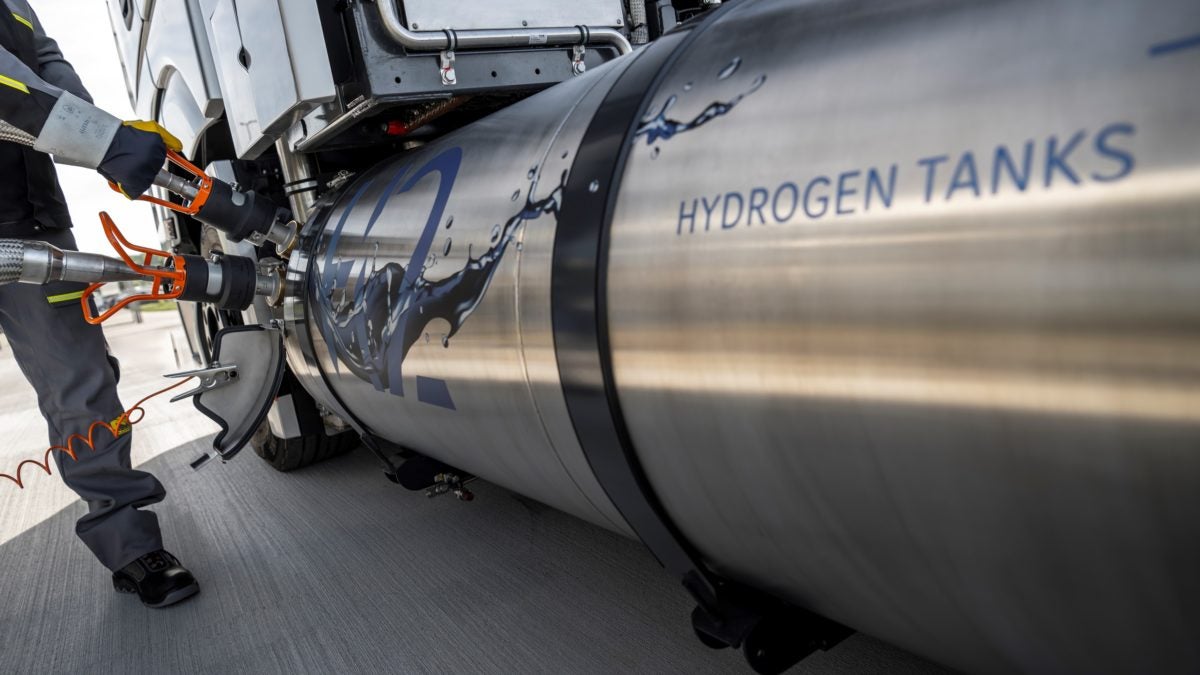
Coming to America
The GenH2 system, if not the truck itself, will find its way into Daimler Truck North America’s product portfolio later this decade. DTNA likely will first offer a fuel cell-powered truck from Cummins Inc., its longtime diesel engine supplier.
Daimler has simulated U.S. routes and determined the GenH2 could fit North American freight hauling needs. Discussions are underway over whether and when to bring the system stateside. Daimler will begin offering the GenH2 in Europe in 2026.
“The integration of the cellcentric fuel cell is possible,” Hofert said.
Rakesh Aneja, DTNA head of global mobility, said having a choice of fuel cell systems — Cummins or cellcentric — is consistent with offering customers options. DTNA also is working on a hydrogen fuel cell-powered truck as part of the Super Truck 3 program sponsored by the U.S. Department of Energy.
“We’re looking at what’s best suited for North American application and how it complements the battery-electric option,” Aneja said. “The timelines are still being developed and finalized. This stuff is complicated. We’ve got to engage in demonstration programs to really gain that collective experience.”
Forming a joint venture for fuel cells
Daimler brought in rival Volvo Group as a 50-50 partner in the cellcentric fuel cell joint venture. Volvo plans to begin customer testing of its version of the fuel cell-powered truck in 2025. Indications are the trucks will be very similar behind the hood. Cabover designs for Europe address the slower highway speeds for trucks compared to passenger vehicles.
Unlike Daimler, Volvo is depending on the joint venture to put it in the hydrogen fuel cell business, an area it rarely mentioned before paying Daimler $600 million in 2020 to team up.
“Cellcentric is the key when it comes to fuel cells,” said Johan Agebrand, Volvo Truck North America marketing director. “The efficiency of the fuel cell, that’s where we need work. We do have fuel cells and a battery because you’ve got to have that intermediate storage.”
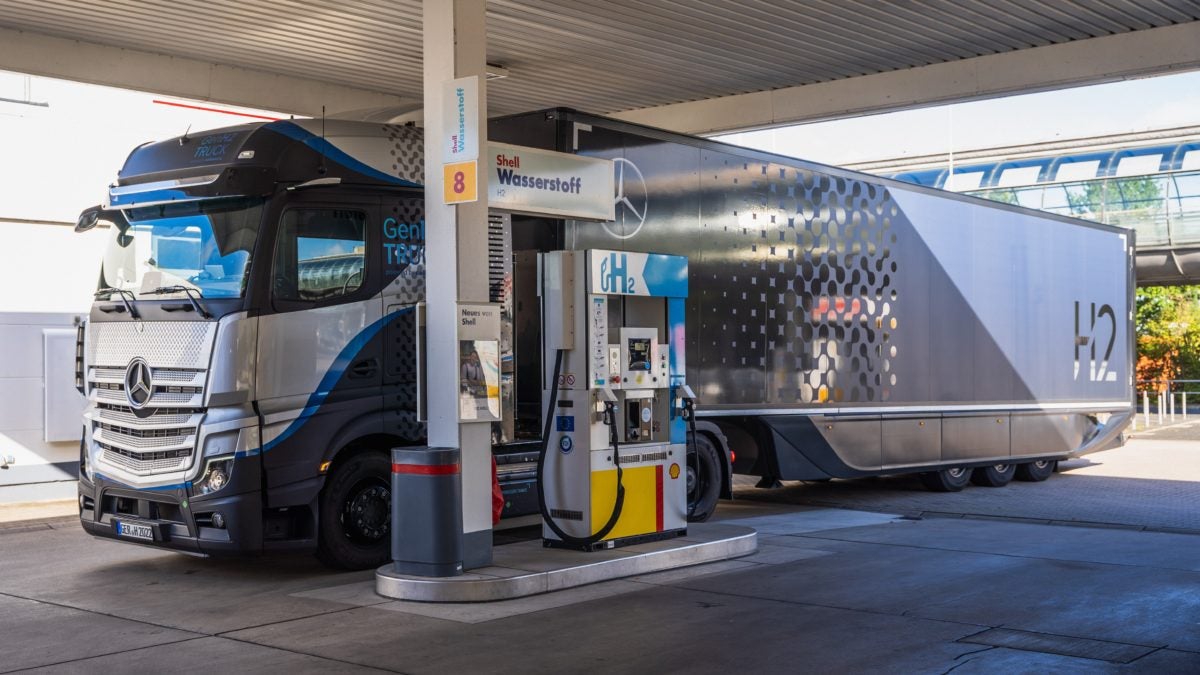
Related articles:
Freightliner Cascadias to run on Cummins’ fuel cells
Bosch investing $200M in U.S. to make hydrogen fuel cells for Class 8 trucks
Fear of missing out: Daimler and Volvo form fuel cell joint venture
Click for more FreightWaves articles by Alan Adler.
The post Daimler Truck’s GenH2 is more than just a fuel cell appeared first on FreightWaves.
Source: freightwaves - Daimler Truck’s GenH2 is more than just a fuel cell
Editor: Alan Adler